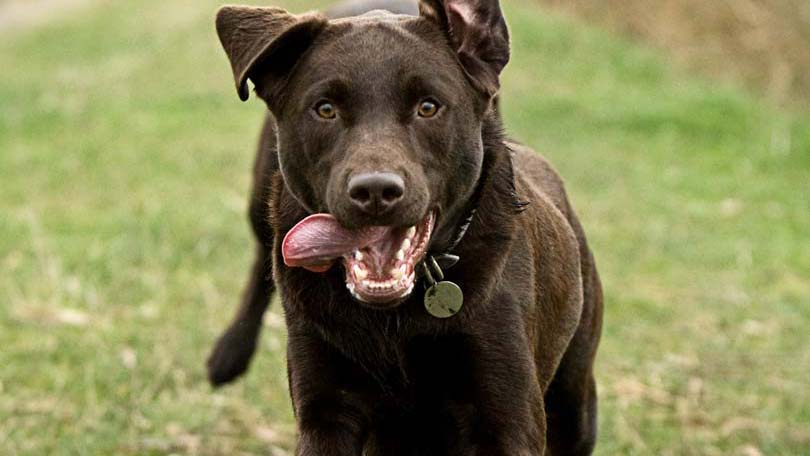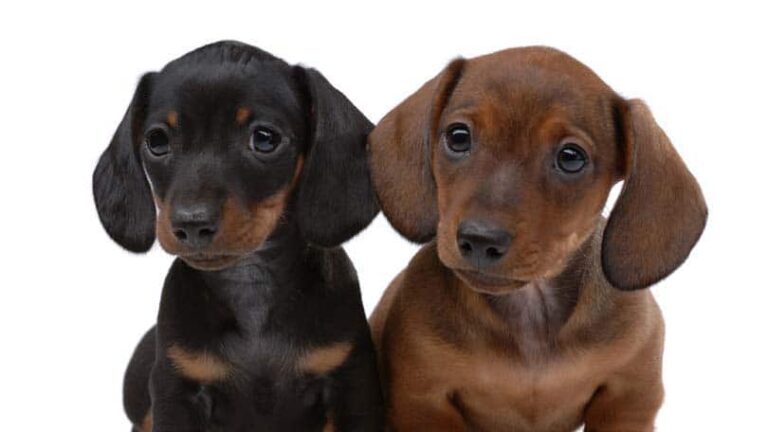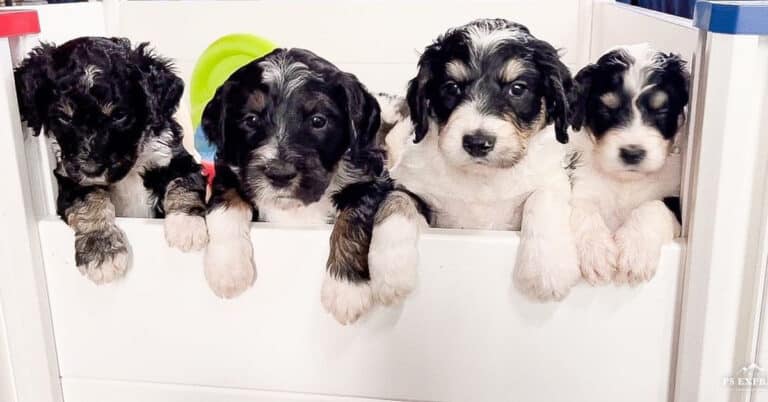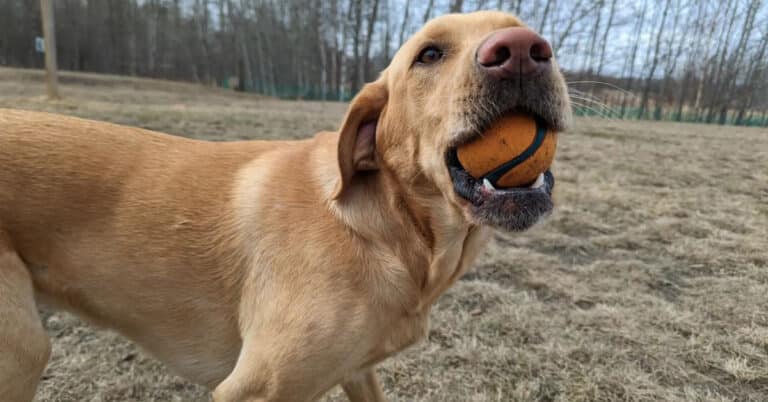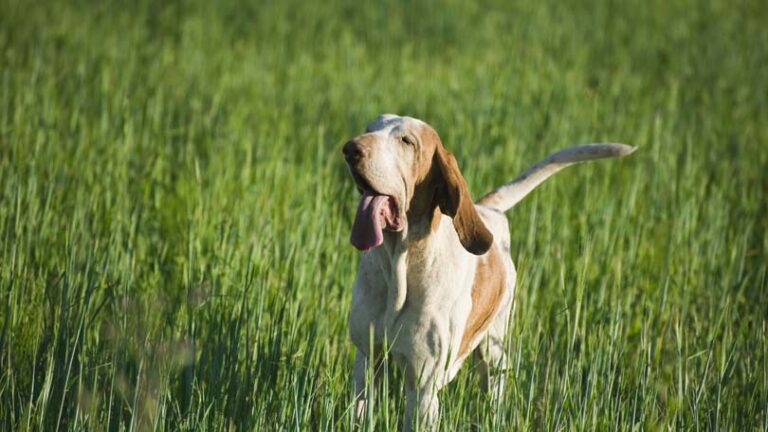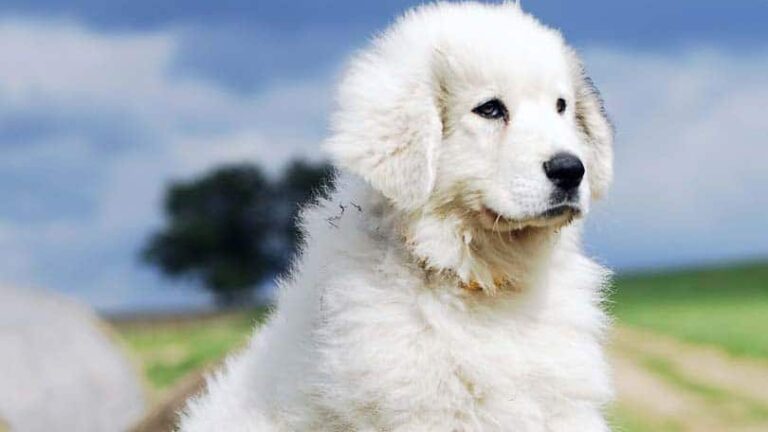Sporting Dog Breeds – Information About 28 Breeds of Sporting Dogs
Sporting dogs were some of the first dogs recognized by kennel clubs in both the United States and Britain. The oldest dog breed registry in the United States, the Field Dog Stud Book, dates back to 1874 and was created specifically to register Sporting dogs. It is still in operation today. The American Kennel Club was founded in 1884 and the first nine breeds registered with the club were Sporting breeds. These dogs have been popular and helpful to hunters for hundreds of years, and the group continues to grow today. Today there are 28 breeds in the group in the AKC; the number varies a little in the UK and with other registries, but most of the breeds are the same. The newest breeds admitted to the group in the AKC were the Boykin Spaniel and the Irish Red and White Setter in 2009.
Sporting dogs, in general, are active, well-rounded dogs that make excellent companions. They typically make good family dogs because they are gentle and eager to please. Many of these breeds love children. They range in size from the Irish Setter and Pointer, which are the tallest members of the group, to the small American Cocker Spaniels. Dogs in the group are both short-haired and long-haired, and even wire-haired.
It’s important for anyone considering a Sporting dog as a pet to be aware that most of these breeds need plenty of daily exercise. They are loving, devoted dogs, but they are quite energetic, especially when they are young. A daily walk is not enough activity for them. Most of these dogs need room to run. Many of these breeds can also be quite “mouthy” or they like to put things in their mouths. They will chew on things, especially when they are puppies. This is perhaps due to their instinct to retrieve, but it means that owners need to take special care to provide chew toys and keep other objects out of reach.
Many Sporting dogs are above average in intelligence, such as the Labrador Retriever and Golden Retriever, and they are relatively easy to train. These dogs like pleasing their owners and they usually want to be close to people. They do well when they are allowed to develop a close bond with their owners or families. They do not generally make good protection dogs. They are not aggressive. In some cases, they are extremely friendly with strangers. But most of these breeds will bark to give a warning if a stranger approaches.
The group includes Pointers, Setters, Retrievers, and Spaniels, as well as several continental all-purpose gun dog breeds. The British breeds were bred to specialize in the field while dogs from Europe were more likely to be bred as all-purpose dogs in the field. But all of these breeds have exceptional instincts in the field or in the water. Many people still hunt with these dogs today and take part in hunting tests and other field activities.
American Water Spaniel
The American Water Spaniel is considered a rare breed but it is the state dog of Wisconsin. It is one of the relatively few dogs that has been developed in the United States and was created in the mid 1800s in the Great Lakes area. Their ancestors include the Irish Water Spaniel and the Curly-Coated Retriever. They were recognized by the AKC in 1940. They are a dual-purpose dog, excelling as a water retriever and as a companion. The dogs are medium in size and are active and muscular. Their coat is somewhat unique and can range from marcel (which means it has a uniform wave) to being tightly curled. Their colors are solid liver, brown or dark chocolate. American Water Spaniels make an excellent family dog. They stand between 15 and 18 inches tall at the shoulder and can weigh between 25 and 45 pounds.
Boykin Spaniel
The Boykin Spaniel is a comparatively new breed. The dogs are descended from a small brown dog found wandering near a church in Spartanburg, South Carolina in the early 1900s. The dog turned out to be an excellent dog for hunting turkeys and retrieving waterfowl. The breed was named after the man who trained the dog and the town where they lived – Boykin. The dog’s name was Dumpy. Boykins today are cheerful, energetic, and medium-sized. They make good all-around hunting dogs. They have a rich chocolate brown coat and lots of stamina, which makes them a favorite with hunters. Their friendly, charming personality makes them a good family companion, especially an active family. They love to be around kids and other dogs. Boykins are the state dog of South Carolina. Boykin Spaniels usually sand between 14 and 18 inches tall at the shoulder.
Brittany
The origins of the Brittany are “lost in the mists of time,” as the saying goes, but they are likely descended from some of the spaniels found in Europe in earlier times. According to one source, dogs of this type date to the 17th century. However, it’s almost certain that they were bred with Pointers and English Setters in the late 19th century to produce the Brittany known today. They hunt like Pointers and Setters and not like Spaniels, going into a point when they find birds. The Brittany comes from the French province of the same name in the northwestern part of France and it was popular at that time for British sportsmen to hunt there, just across the Channel from Britain, and to take their English Setters and Pointers with them at times. Brittanies used to be called “Spaniels” by the AKC but today they are simply known as the Brittany.
The Brittany is a medium-sized, energetic dog who is still frequently used in the field. They make good pets and family dogs. They have a dense, flat or wavy coat that can be either orange and white or liver and white. They can be clearly patched or have roan coloring. Brittanies are strong, agile dogs and they need a lot of exercise. They are also very smart and they do well if they have someone who has time to train them. They are usually happy, affectionate dogs. They typically weigh 30-40 pounds and stand 17 ½ to 20 ½ inches tall at the shoulder.
Chesapeake Bay Retriever
The Chesapeake Bay Retriever is another breed that was developed in the United States, along the Chesapeake Bay, and they are the state dog of Maryland. They are a tough water retriever, able to withstand difficult conditions in the water. The dogs are strong and powerful, and medium to large in size. They have yellow or amber eyes and an unusual coat. Their coat is short and harsh with a wavy outer coat and a dense, wooly undercoat that helps them stay warm in the water. Their color can be brown, sedge or “dead grass,” and should be as close as possible to their surroundings when working. It acts as a sort of camouflage.
The Chessie, as they are known, is said to be descended from two Newfoundlands who were shipwrecked and rescued off the coast of Maryland in the early 19th century. These two dogs were bred to local Retrievers and an Otter Hound, and the Chessie type was gradually developed. Chessies can work on land and in water. Today they are happy, intelligent dogs who love water. They are great for active families who enjoy the outdoors. The Chesapeake Bay Retriever weighs between 55 and 80 pounds and stands 21 to 26 inches tall at the shoulder.
Clumber Spaniel
The Clumber Spaniel was one of the original nine breeds registered by the American Kennel Club. The breed most likely originated in France. The Duc de Noailles kept spaniels of this kind prior to the French Revolution and sent them to the Duke of Newcastle in England for safety. The Duke’s estate was called Clumber Park, which gave the breed their name. The dogs are built differently from most other spaniels – they are low to the ground and work slowly. There was probably some breeding with Basset Hounds at some point in the breed’s early development. They were prized by sportsmen because they could hunt more slowly in heavy cover and they had stamina to trot and and hunt all day.
Clumbers may look sad and thoughtful but they are actually quite cheerful, happy dogs. They are enthusiastic whether they are working or playing and they make good family dogs. Clumbers have a lovely white coat with lemon or orange speckled markings. Clumbers require less exercise than most other Sporting dogs. Anyone who is considering getting a Clumber Spaniel needs to be aware that these dogs drool and slobber quite a bit and they can snore. They also tend to shed a little year-round. This is not a dog for a neat freak. Clumbers weigh 55 to 85 pounds and stand 17 to 20 inches tall at the shoulder so they carry a lot of weight for their height.
Cocker Spaniel (American)
At one time there were simply Cocker Spaniels, which originated in England several hundred years ago. However, upon coming to the United States, the dogs were bred to hunt game found here, which led to some physical changes in the dogs bred in the U.S. By the 1940s it was obvious that American Cocker Spaniels and English Cocker Spaniels were separate breeds and both the Kennel Club in Britain and the AKC separated them into distinct breeds. In the U.S. when someone refers to the Cocker Spaniel, they mean the American Cocker Spaniel. In the UK when someone refers to the Cocker Spaniel, they mean the English Cocker.
The American Cocker Spaniel was the most popular dog in the U.S. for many years and they remain popular today. They are small, compact dogs that come in three color varieties: Black, Parti (different colors such as black and white), and ASCOB (any solid color other than black). Their coat is silky and flat or wavy and it is typically long, though many pet owners keep their dogs trimmed short. They are happy, sweet dogs who make good pets and who like to be around people. Although they are small, they are still active dogs and they need regular daily exercise. They are intelligent, gentle dogs and they like to play. Cockers usually stand 13 ½ to 15 ½ inches tall.
Curly-Coated Retriever
The Curly-Coated Retriever makes an intelligent and energetic companion. They tend to be independent thinkers so they do well with training and a job to do. Otherwise, they can get into trouble if they are left to find things to keep themselves amused. They like to work and they love to retrieve. Any kind of job with water and retrieving will make them happy. They are a great dog for an active family, especially one that enjoys the outdoors. They often don’t have as much need to be with people as other Retrievers, but they still love to please.
The Curly Coat has a coat of tight, crisp curls that are water-resistant. They’re a good multi-purpose hunting retriever. Their coat can be black or liver. They can hunt in heavy cover or icy water. The Curly Coat is believed to be one of the oldest of the Retrievers after the Labrador. They are thought to be descended from the St. John’s Newfoundland (a cross of the St. John’s Water Dog), the English Water Spaniel, and the Poodle. The breed was originally developed in England around the same time as the Flat-Coated Retriever. The Curly-Coated Retriever usually stands 23 to 27 inches tall at the shoulder.
English Cocker Spaniel
The English Cocker Spaniel was originally just the Cocker Spaniel before it was separated into the American and English Cocker. Today these small dogs are noticeably different from American Cocker Spaniels. The English Cocker Spaniel is slightly taller than the American Cocker and their head shape is very much that of a traditional Spaniel, with melting Spaniel eyes. They are compact, solid dogs who typically have a long coat. Their coat can be solid-colored (black, liver or shades of red) or parti-colored, including ticking or roaning. English Cockers trace back to the earliest beginnings of Spaniels which are believed to date back to the Middle Ages or earlier.
English Cockers are known as merry, active, enthusiastic little dogs, though they are larger than American Cockers. They usually make excellent pets and family dogs. They are affectionate, happy, and easy to train. However, like other Sporting dogs, they do require plenty of daily exercise. English Cockers stand 15 to 17 inches tall at the shoulder and weigh 26 to 34 pounds.
English Setter
English Setters were working bird dogs in England by the 16th century but it’s not clear exactly when the dogs developed their unique stalking and setting crouch to indicate birds. In Tudor times hunters used falcons to hunt with the dogs, or gamekeepers tossed a net over both the dog and the birds on the ground. Later, the dogs adapted to hunting with guns. Today many people still enjoy hunting with English Setters but they also make wonderful pets and family dogs. They usually love children.
English Setters are gentle and playful dogs but they need lots of daily exercise. They have a medium to long coat that is white with flecks of color called belton markings. The color can be orange, blue (black), lemon, liver, or tri-color (usually black and orange markings). Specks of color are preferred but dogs can have roaning or patches, too. English Setters are intelligent and generally easy to train, though they can be stubborn at times. They see no point in doing things the hard way if there are easier ways to do them. It’s important to find positive ways to motivate them. English Setters love people and they are very friendly, even with strangers. They are loving and affectionate with their families and they always want to be with you. English Setters typically stand 24 to 25 inches tall at the shoulder and they can weigh between 55 and 75 pounds.
English Springer Spaniel
At one time Spaniels were simply divided into Land Spaniels and Water Spaniels. What we know today as Cocker Spaniels and Springer Spaniels are descended from Land Spaniels and were born in the same litters. The smaller dogs, the Cockers, were used to hunt woodcock, while the larger dogs were used to flush or “spring” birds. Eventually these Springers were separated into their own breed. English Springer Spaniels were recognized by the Kennel Club in Britain in 1902 and a few years later by the AKC.
English Springers are stylish, enthusiastic dogs who are always eager to please their owners. The dogs have medium-long coats that are usually liver and white or black and white, but they can also be blue or liver roan, or tricolor. They are a medium-sized, active dog and, like other Sporting breeds, they need plenty of daily exercise. They make good companions and family dogs and they like to be near their owners. The English Springer Spaniel usually stands 19 to 20 inches tall at the shoulder and weighs 40 to 50 pounds.
Field Spaniel
Field Spaniels were developed in England in he mid 19th century. Their purpose was to find, flush, and retrieve all kinds of game on land and water. They were brought to the U.S. in the 1880s but were considered to be the same breed as Cocker Spaniels and were not separated into their own breed until the 20th century. At that time it was decided that dogs over 25 pounds would be Field Spaniels.
Field Spaniels are rather rare. They are gentle, fun-loving dogs who want to be close to their families at all times. They are not very outgoing with strangers but will soon become friendly. They are medium-sized dogs with long ears and a single coat that is dense and water-repellent. Their coat can be black, liver, or golden liver; and they can have tan points or white markings. They require moderate daily exercise. They have somewhat less coat than most of the other Spaniel breeds. Field Spaniels stand 17 to 18 inches tall at the shoulder.
Flat-Coated Retriever
The Flat-Coated Retriever was developed in the mid 19th century from the same St. John’s Water dog that formed the basis for the Labrador Retriever and other Retriever breeds. The Newfoundland is also believed to have been used to develop the breed, along with some Setters and Collie-type herding dogs, and some Spaniels. Flat-Coats began appearing around 1860 but the breed wasn’t really set until about 1880. The dogs were originally bred to flush and retrieve both game birds on land and waterfowl. Today they make excellent family companions, especially for active families. In appearance, the dogs have medium-long solid black or liver coats. The hair is flat, hence the name. They are slightly racier and more moderate in appearance than other Retrievers.
Retrievers are cheerful, good-humored dogs and they make great pets. However, as you might expect, they do need lots of vigorous daily exercise. They do well at obedience, agility, and hunting-related activities. Flat-Coat usually stand 22 to 24 ½ inches tall at the shoulder.
German Shorthaired Pointer
The German Shorthaired Pointer is one of the most versatile of the Sporting breeds. They were developed in Germany, possibly from the German Bird Dog or the original old Spanish Pointer, and crossed with scent hounds that could track and trail prey. Later the dogs were bred with Pointers from England to give the dogs more elegance. The resulting dogs were all-purpose hunting dogs able to hunt more than birds. They are powerful, intelligent dogs able to find gamebirds as well as track other game, including raccoons and even deer.
GSPs are very bright and easy to train, but they have a high working drive and they do best with an active family or an owner who will train them and give them a job to do. They have a good, steady temperament but they need plenty of daily exercise. They are shorthaired and their coat can be solid liver or liver and white. The GSP usually stands 23 to 25 inches tall at the shoulder and weighs 55 to 70 pounds.
German Wirehaired Pointer
The German Wirehaired Pointer is another versatile German pointing breed. The dogs were developed by using a number of varied breeds including the German Shorthaired Pointer, the Pointer, the Stichelhaar (a mix of Pointer, Foxhound, Pudelpointer, and Polish water dog), and the Pudelpointer (a cross of Poodle and Pointer). There were later infusions of the Pointer, Foxhound, and Poodle to achieve the exact traits that were wanted. The result was an all-purpose hunting dog with a functional, wiry coat that is water-resistant and which repels water. The harsh outer coat helps protect the dog when hunting in rough cover. The coat is always liver and white. German Wirehaired Pointers are strong, medium-large dogs who are tough and courageous in the field.
At home, the GWP is loyal and affectionate. They love to be with their owners and they make wonderful family dogs. They are a high energy breed and they need plenty of daily exercise. The German Wirehaired Pointer stands 22 to 26 inches tall at the shoulder.
Golden Retriever
The Golden Retriever is one of the most popular breeds not just in the U.S., but also in Canada, the UK, Australia, and many other countries. Even people who know nothing about dogs can recognize Golden Retrievers. Goldens are not a very old breed in canine terms. They date back to early to mid 19th century Scotland when Lord Tweedmouth bred “Yellow Retrievers” to the now-extinct Tweed Water Spaniels on his estate. Later, Irish Setters, Bloodhounds, and more Tweed Water Spaniels were used to further develop the new breed.
Goldens are exceptionally intelligent dogs and known for being easy to train. They are always eager to please, gentle, and friendly dogs. They make wonderful family dogs and love children. Like all Sporting dogs, they require plenty of daily exercise, however. They excel at obedience, agility, and other canine sports, and they are frequently used as assistance dogs, search and rescue dogs, and therapy dogs. Goldens usually weigh 55 to 75 pounds.
Gordon Setter
The Gordon Setter is a Scottish breed that was developed by the Duke of Gordon in the 18th century. They have also been known as Black and Tan Setters because of their coloring. Gordons have more bone and substance than the other Setter breeds and they typically weigh more. They also tend to work more slowly in the field. These traits are intentional as they were bred to work in denser terrain. Gordons are like the other Setter breeds in many ways but they tend to be slightly more reserved and a little more territorial. They are loving and affectionate with their families and love children. They make wonderful pets.
Gordons are sturdy, muscular dogs and their appearance suggests strength and stamina. They are very intelligent but they do not necessarily obey without question so they can seem stubborn sometimes. They need plenty of daily exercise. The Gordon stands 23 to 27 inches tall at the shoulder and weighs 45 to 80 pounds.
Irish Red and White Setter
The Irish Red and White Setter is a distinct breed from the Irish Setter, though they share similar origins. The Irish Red and White is said to date to the 17th century in Ireland and was connected to the Rossmore family. At that time all of the Irish dogs were mostly red or red and white, with the dogs appearing in the same litters. However, in the 19th century, the solid red dogs were preferred, which became the Irish Setters. The Red and White Setters became nearly extinct. However, in the 20th century, from about 1970-80, efforts were made to revive the breed and today they are starting to thrive again. They are most often seen in the field, but they also make excellent family companions, provided they receive plenty of exercise.
Irish Red and Whites are intelligent, athletic dogs and they do well with active families. Training them can be a slow process but once trained, they always remember. The Irish Red and White has a white coat with solid red patches. Their hair is medium-long and silky. Like other Setters, they are kind, friendly dogs and they are very affectionate with their families. They typically stand 22.5 to 26 inches tall.
Irish Setter
The Irish Setter is one of the most recognizable members of the Sporting group. They are a solid red dog, with the color ranging from chestnut to mahogany. They are considered one of the most beautiful of all dogs. They have a rollicking, fun-loving personality and they make excellent family pets. They usually love children. However, they are very energetic dogs and they need plenty of daily exercise. They are very affectionate and loving with their families. They are generally friendly toward strangers though they can be protective toward their homes when necessary.
Like the other Setters, the Irish Setter is very intelligent but he can prefer to do things his own way which can make him stubborn at times. All Setters can develop selective hearing when it suits them. The Irish Setter stands 25 to 27 inches tall at the shoulder, making them the tallest of the Setters; and they weigh 60 to 70 pounds.
Irish Water Spaniel
Considered the clown of the Spaniel clan, the Irish Water Spaniel is a joyous dog who finds the fun in any situation. The Irish Water Spaniel is strong and intelligent, active and energetic. They have a liver-colored curly coat that is water-repellant. It is dense with tight ringlets. The dogs have a topknot of long, loose curls but their face is smooth. They have a rat tail that is thick and covered with curls at the base, but it tapers to a fine point with short, smooth hair. They are outstanding water retrievers but they ae also good dual-purpose dogs and can hunt upland game as well.
The Irish Water Spaniel is an old breed, possibly dating back to as early as the 7th or 8th century AD and the breed is likely related to the Poodle and other curly-coated water dogs that were developed later. They are a high energy dog and need lots of exercise but they make good family companions. They have a strong desire to please and are easy to train. They shed very little and they are considered a good choice for people with allergies. The Irish Water Spaniel usually weighs 45 to 65 pounds and they stand 21 to 24 inches tall at the shoulder.
Labrador Retriever
The Labrador Retriever has been the most popular breed in the United States for over 20 years. They are gentle, extremely intelligent, and loving family dogs. They are great with kids. Labs are considered to be one of the most intelligent breeds of dogs and are usually easy to train. They have excelled in obedience, agility, and other dogs sports, as well as search and rescue, bomb sniffing, arson detection, police work, assistance dog and guide dog work, and just about anything a dog can be trained to do. They have a strong desire to please their owners.
Labrador Retrievers originated in Canada and England from the St. John’s Water Dog, which is extinct now. These small black water dogs in Canada were used to help fishermen with their nets and were outstanding water dogs. Sportsmen in England crossed them with Setters, Spaniels, and other Retrievers to create the Labrador Retriever in the early 19th century. Labs are outstanding water retrievers and they can also retrieve on land. Some Labs can also find game. Like other Sporting dogs, Labrador Retrievers need plenty of daily exercise, especially when they are young. They have a water-resistant coat and they can be black, yellow, or chocolate. Labs weigh between 55 and 75 pounds.
Nova Scotia Duck Tolling Retriever
The Nova Scotia Duck Tolling Retriever is the smallest of the Retrievers. He is medium-sized, powerful, and compact with an attractive red coat. Their water-repellant coat can range from golden red through coppery red. Dogs usually have some white markings such as on the tip of the tail or on the paws, nose, or chest. The breed was developed in the 19th century to “toll” or play along the shoreline and lure ducks within gunshot range of the hunter. Then the dog goes out to retrieve the birds. The ancestors of the dogs were probably brought to Canada with the settlers who came there from Europe. There were probably crosses with Setters, other Retrievers, Spaniels, and possibly some farm Collies.
Today the Nova Scotia Duck Tolling Retriever is highly intelligent and friendly. They enjoy training and like to have a job to do. They are gentle and loving with their family and get along well with children. They do require plenty of daily exercise. They typically stand 17 to 21 inches tall at the shoulder.
Pointer
Pointers appeared in England around 1650. Although they are sometimes referred to as the “English” Pointer, they are simply known as the Pointer. At that time, before hunting with guns became common, they were also used to hunt small game such as hares, along with Greyhounds. The Pointer is likely descended from the Foxhound, Greyhound, and Bloodhound, along with the earlier English Setter and the old Spanish Pointer, now extinct.
Pointers are muscular, athletic dogs and they should give the impression of being ready to run and hunt. They are powerful, graceful dogs and bred to hunt. They have a short coat that can be liver, lemon, black, and orange; either in combination with white or solid-colored They make nice family dogs and have a steady, even temperament. They require plenty of daily exercise. Pointers typically stand 23 to 28 inches tall at the shoulder, making them the tallest of the Sporting dogs; and they weigh 44 to 75 pounds.
Spinone Italiano
The Spinone Italian, also known as the Italian Pointer, is an all-purpose gun dog from Italy. They are an excellent retriever and a good hunter on any terrain. The Spinone is a slower hunter and is likely a cross of Italian Setters, hunting dogs from the Adriatic coast, and crosses with the White Mastiff and French Griffons. They have a wiry, dense coat and thick skin that allows them to hunt in thick underbrush and to retrieve in cold water. Their coat can be solid white; white and orange; orange roan with or without orange markings; white with brown markings, brown roan with or without brown markings.
The Spinone is a sociable, gentle dog, and he loves to be with his family. These dogs love to run and play so they need room to run. They tend to be cautious dogs so early socialization is important. They do have a bearded face so they can be messy when they drink water or eat. The Spinone Italiano stands 22 to 27 inches tall at the shoulder.
Sussex Spaniel
The Sussex Spaniel is one of the older Spaniel breeds, dating back to the 18th century in the county of Sussex in England. They were used as field dogs there. They are a small Spaniel and they were favored by hunters hunting on foot. They continue to be a good dog for use as a hunting companion and for flushing and retrieving upland game. Their appearance today has changed little since those earlier times. They have a rich, golden liver coat that is unique to the breed, and a long, low, rather massive body. They are not as fast as other Spaniels but they have a great nose and they are perfect for working in dense underbrush. The Sussex was one of the first nine breeds recognized by the AKC.
At home, the Sussex makes a wonderful pet. They look serious but they are quite cheerful and friendly little dogs. They love to go on walks with their owners and they love children. They get along well with other dogs and pets. The Sussex does tend to drool quite a bit, so if you are considering this breed you should be prepared. The Sussex Spaniel stands 13 to 15 inches tall at the shoulder and weighs 35 to 45 pounds.
Vizsla
Vizslas are an old breed from Hungary, possibly dating back as much as 1000 years. They are considered an all-purpose pointing and retrieving dog and are the smallest of the all-purpose breeds. They are considered to be intelligent, gentle, sensitive, and affectionate, as well as brave and protective. They are robust but they are lightly-built and lean dogs, and muscular. They have a short coat that is distinctive to the breed. It is a beautiful solid golden rust color, though it can come in different shades. They have no undercoat. They also have virtually no dog odor and they do not require very frequent bathing.
Vizslas love to be part of the family and they thrive on a good home life. They are very affectionate with people they love. They also enjoy training and work. They are active dogs and they require plenty of daily exercise. Vizslas stand 21 to 24 inches tall at the shoulder.
Weimaraner
Known as the “gray ghost” because of his beautiful silver-gray coat, the Weimaraner is another all-purpose gun dog from Europe. They were developed at the Weimar court in Germany in the 19th century from other German and European hunting dogs, and from Bloodhounds. The dogs were even used to hunt wolves, deer, boar, and bear at one time. As these animals became scarce, the Weimaraner was focused on hunting upland gamebirds and being a personal hunting companion. Weimaraners are also great water dogs and have webbed paws for swimming. They are well-suited for water retrieving.
Weimaraners are aristocratic and graceful, powerful and sleek. The breed works with speed and endurance. They exude athleticism and they require plenty of opportunity for exercise each day. They are intelligent dogs and considered easy to train because of their strong desire to please. At home, they love children and love being part of the family. They make a great family dog for an active family. The Weimaraner stands 23 to 27 inches tall at the shoulder.
Welsh Springer Spaniel
The Welsh Springer Spaniel is a very old breed, though it was only registered with the Kennel Club in Britain in 1902. It’s likely that this is the closest descendant of the original Land Spaniel often described in early references to Spaniels in Britain. Welsh Springer Spaniels have at various times been called other things such as Welsh Spaniels and even Welsh Cocker Spaniels. They should not be confused with English Springer Spaniels, however. The two breeds are quite separate. The Welsh Springer is smaller and their coat is always white with red markings, unlike the English Springer’s coat. The history of the two breeds is also different. Dogs resembling the Welsh Springer Spaniel are described in Britain as early as 1570 and they probably existed in Britain earlier than that.
Welsh Springer Spaniels are loving, affectionate dogs who adore their families. They love children and get along well with other dogs and pets. They can even become rather clingy with their people in some cases so good socialization from an early age is recommended. They have always been excellent hunting dogs. They can hunt on land, retrieve, and can even work as water dogs. The breed has webbed paws for swimming. The breed can be stubborn at times but they do well with training. They need plenty of daily exercise. They are considered a rather rare breed so it is not always easy to find a puppy. The Welsh Springer Spaniel stands 17 to 19 inches tall at the shoulder.
Wirehaired Pointing Griffon
The Wirehaired Pointing Griffon is bred to hunt in virtually any terrain and was developed to work with the hunter on foot. Their coat allows them to hunt in briars and dense underbrush without any hesitation. They are a versatile gun dog that can act as pointing dogs in the field and retrieve in the water. They have a coarse double coat that protects them in all kinds of rough cover, although it gives the breed a wild appearance. Their coat can be a variety of colors, but they are usually steel gray with brown markings.
Dogs like the Griffon have existed as hunting dogs for centuries but the exact origins of the Griff are not certain. The latter history of the breed is more well-known. In the late 19th century, Dutchman Eduard Korthals wanted a dog that could hunt over a variety of terrain. He used a breeding program to develop a Sporting dog that could meet these conditions. He is said to have used Griffon-type dogs, Pointers, Spaniels, and some water dogs. In less than 20 years he produced the Wirehaired Pointing Griffon and had formed a club for the breed. Griffons are friendly and devoted to their families. They love to be with people and prefer to be house dogs. They are smart and easy to train. They require plenty of daily exercise. The Wirehaired Pointing Griffon stands 20 to 24 inches tall at the shoulder.

Having discovered a fondness for insects while pursuing her degree in Biology, Randi Jones was quite bugged to know that people usually dismissed these little creatures as “creepy-crawlies”.

